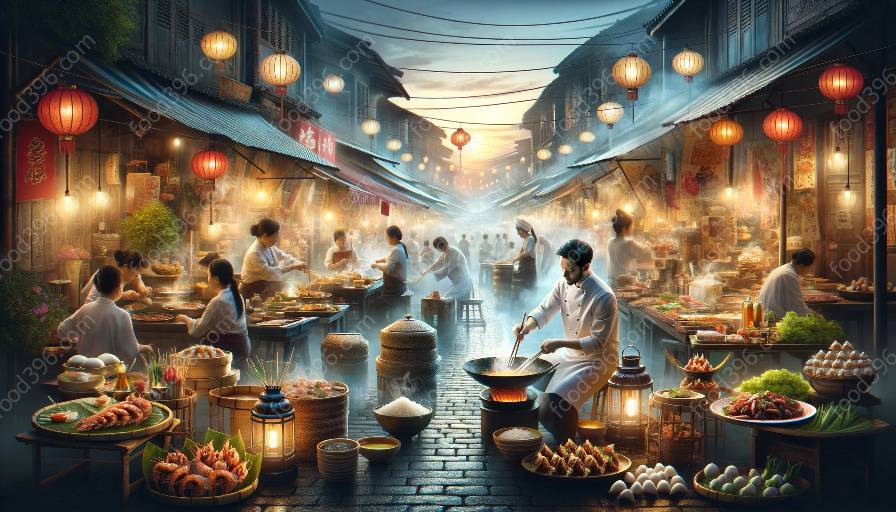Thai cuisine is a delectable tapestry of flavors, textures, and colors that captivate the senses and tell a story of centuries-old culinary traditions. To truly understand the allure of Thai cuisine, one must delve into its history, its influence on Asian cuisine, and its impact on global gastronomy.
The Origins of Thai Cuisine
The history of Thai cuisine is deeply rooted in the country’s geography, climate, and cultural heritage. Dating back to the Sukhothai period (1238-1438 AD), Thai cuisine was influenced by the diverse ethnic groups that migrated to the region, each bringing their own culinary traditions and ingredients.
The ancient kingdom of Ayutthaya (1350-1767 AD) further enriched Thai cuisine by establishing trade relations with China, India, Persia, and Portugal, introducing new spices, cooking techniques, and ingredients. This cultural exchange laid the foundation for the complex and harmonious flavors that define Thai dishes today.
Key Ingredients and Flavors
Thai cuisine is renowned for its bold and vibrant flavors, often achieved through a delicate balance of key ingredients such as fresh herbs, aromatic spices, pungent fish sauce, tangy lime, creamy coconut milk, and fiery chilies. Each region of Thailand boasts its own unique flavors and ingredients, reflecting local agricultural practices and culinary traditions.
Central Thailand, with its fertile plains, is known for dishes featuring jasmine rice, while the lush, tropical south produces an abundance of coconuts, seafood, and tropical fruits. Northern Thai cuisine showcases hearty, earthy flavors and the use of wild herbs, while northeastern Isaan cuisine favors fermented fish and sticky rice.
Thai Cuisine's Influence on Asian Gastronomy
Thai cuisine’s profound influence extends beyond the borders of Thailand, enriching the culinary landscape of Southeast Asia and beyond. The intricate balance of flavors, vibrant colors, and enticing aromas has transcended cultural boundaries, influencing neighboring countries such as Laos, Cambodia, and Myanmar.
It’s important to note that the historical exchange of culinary knowledge between Thailand and other Asian nations has resulted in the fusion of flavors and cooking techniques that define the broader category of Asian cuisine. This cross-pollination of culinary traditions has led to the creation of dishes that are beloved worldwide, such as Thai green curry, pad Thai, and tom yum soup.
Regional Variations and Adaptations
Despite its far-reaching influence, Thai cuisine remains deeply rooted in its regional diversity and distinct culinary customs. As migrants from various regions settled in urban centers, they brought with them their own traditional dishes, contributing to the eclectic array of flavors found in modern Thai cuisine.
For example, the influence of the Chinese community in Thailand can be seen in the prevalence of dishes like khao man gai (Hainanese-style chicken and rice) and kuay teow (noodle soup), while the Indian and Muslim communities have contributed dishes like massaman curry and satay. These adaptations and influences underscore the dynamic nature of Thai cuisine and its ability to evolve while retaining its essential characteristics.
The Evolution of Thai Cuisine in Global Context
The globalization of cuisine has brought Thai food to the forefront of international gastronomy, with Thai restaurants and street food stalls becoming ubiquitous in major cities around the world. The growing appreciation for Thai cuisine has led to a deeper understanding of its historical and cultural significance, inspiring chefs and food enthusiasts to explore its rich tapestry of flavors and ingredients.
The integration of Thai flavors and cooking techniques into global culinary practices has resulted in innovative fusion dishes and culinary collaborations that showcase the adaptability and versatility of Thai cuisine. This evolution reflects the ever-changing nature of food culture and the enduring appeal of Thai cuisine on the world stage.
The Future of Thai Cuisine
As the world continues to embrace diverse culinary traditions, the future of Thai cuisine remains bright and dynamic. Ongoing efforts to preserve traditional recipes, promote sustainable farming practices, and celebrate regional diversity ensure that the essence of Thai cuisine will endure for generations to come.
By honoring the historical roots of Thai cuisine and embracing its evolving narrative, we can appreciate the cultural significance and global impact of this exceptional culinary tradition. From the bustling streets of Bangkok to the shores of Phuket and beyond, the flavors of Thai cuisine continue to captivate, inspire, and unite people around the world.

